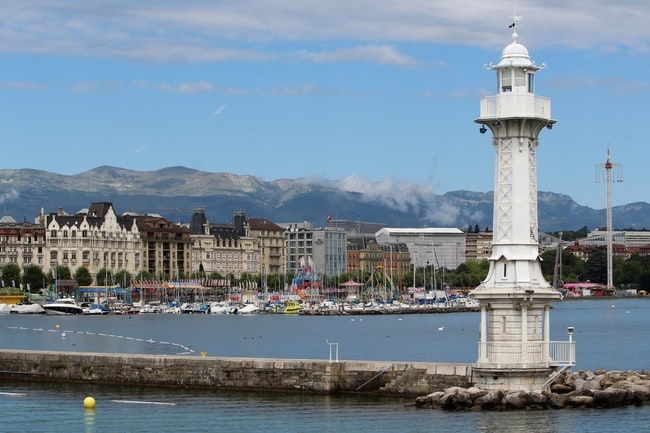Italo Valcy, CIARA Senior Network Engineer, participated in the 4th SIG-NGN Meeting and LHCOPN/LHCONE Workshop, an event hosted by CERN (European Organization for Nuclear Research) in Geneva, Switzerland from January 13, 2020, to January 17, 2020. The SIG-NGN is the Special Interest Group on Next Generation Networks. The main goal of the meeting was to create an opportunity for the High-Energy Physics community and the Academic and Research Network operators to collaborate and discuss projects. Additionally, the LHCOPN/LHCONE workshop discussed the experiments currently running and requirements, including ALICE, ATLAS (expects throughput from CERT to Tier1s/big-Tier2s of 20-40GB/s), CMS (encouraged Network Monitoring, traffic marking [inband telemetry] and pacing), LHCb, DUNE, and Belle II.
A summary of the WG report on NFV was presented by Dr. Shawn McKee and the main discussion was related to i) traffic marking to make the network use visible (an experiment should better understand where the data flow is when in flight), ii) shaping WAN data flows through pacing (dynamically detect the maximal path available bandwidth and adjust the endpoints to send traffic on a proper speed) and iii) orchestrating the network for multi-site infrastructure using OpenStack and Kubernetes. Topics such as distributed Kubernetes and multi-site resource orchestration were discussed and how they can benefit experiments.
The network capabilities proposed by the NFV-WG could be delivered by the AmLight -ExP In-Band Network Telemetry (INT) project where the idea is to collect detailed information about the network path and make them available for the researchers. Possible use of Kubernetes, virtual machines, and containers on the NRENs along a circuit path could help to collect this information. Another possible option is the use of optional headers of IP/TCP/UDP to carry out the information (marking). There is an open space for collaboration to sharing some knowledge on in-band telemetry.
A new option presented at the SIG-NGN Meeting was the use of a cost-model for network cache size for High Energy Physics (HEP) workflows. Although the mathematical model for estimating the cost optimization is complex, such a strategy looks promising. The AmLight infrastructure can be used as a network cache along with the academic internet exchange fabric.
Publishing network-aware information on on-going massive data transfers (e.g., NOTED project by CERN) can be used by network operators or orchestration tools to adjust their network or create new paths for better network usage, and load balancing. The NOTED project can be the repository of information for Software Defined Exchanges (e.g., AtlanticWave-SDX) where SDX software could provide an interface that can be used to request circuits with application-specific information (time, duration, amount of data, etc).
Last but not least, the High-Touch real-time precision network (out-of-band) telemetry service was presented by ESnet in order to provide better monitoring (e.g. precision timing). The goal of this service is to use the mirror capability of any network equipment and selectively send the traffic for programmable hardware (High-Touch server) that will append meta-data (telemetry data) and repackages packet for transmission to the collector. The service uses P4 for the pipeline customization on the High-Touch-Server’s smartNIC and a custom header structure for telemetry meta-data. The packet payload is removed for privacy and the telemetry data is stored for offline local analysis (short-term storage 1-2hr). From the telemetry data, they conducted a number of analyses and presented use cases for TCP rate monitoring and machine learning for traffic classification.
All presentations are available on the links below, as well as a report for the LHCOPN/LHCONE meeting:
Presentations for SIG-NGN: https://wiki.geant.org/pages/viewpageattachments.action?pageId=126983499
Presentations for LHCOPN/LHCONE: https://indico.cern.ch/event/828520/
LHCOPN/LHCONE meeting report: https://indico.cern.ch/event/828520/attachments/1971320/3282577/LHCOPNE-20200114-CERN-meeting-report-v1.1.pptx.pdf

